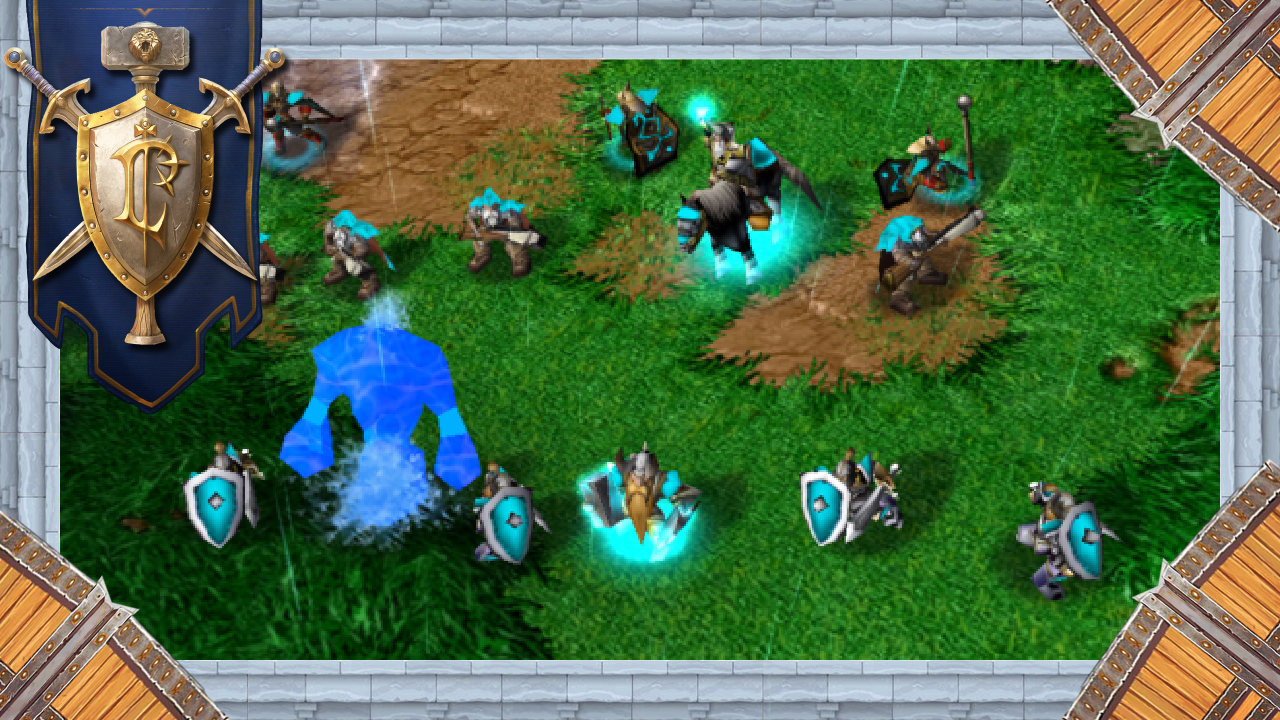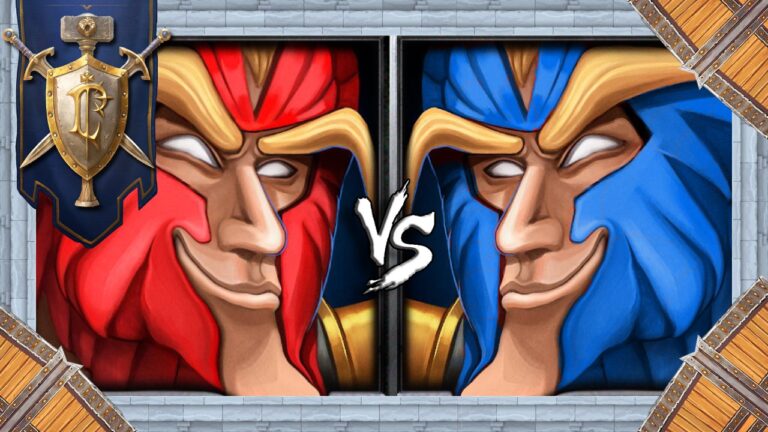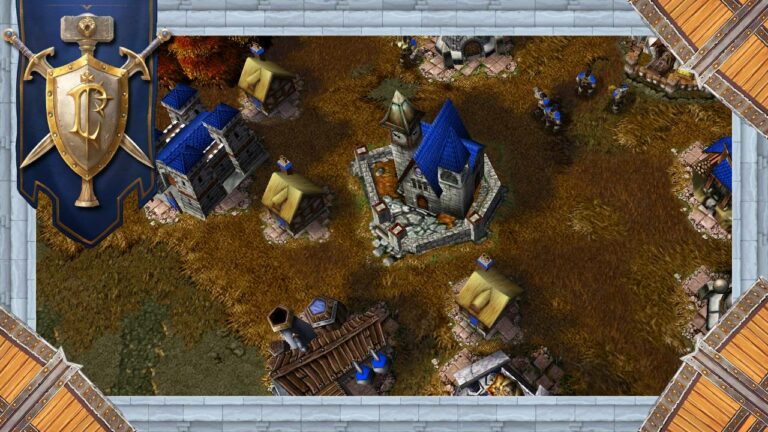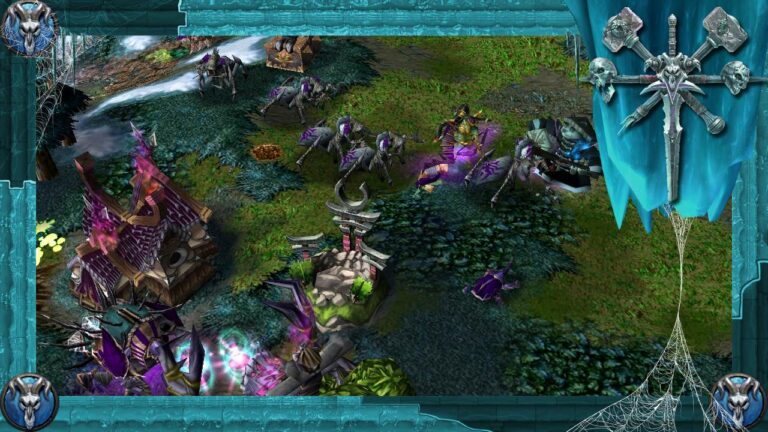Hello and welcome to playing Human in Warcraft 3! The goal of this guide is to help novice players get started with online 1v1 play. This guide assumes you have some understanding of Warcraft 3. If you’re completely new to the game I recommend you start out playing the single player campaign, which is a fun way to learn the basics of the game before jumping into multiplayer matches. If you’ve got a grasp on the basics but aren’t sure where to start when it comes to multiplayer then this guide is for you!
The Strategy
This guide will be about playing rifle caster, which is a timeless classic when it comes to playing human in Warcraft 3. The idea is to build towards a mid-game power spike of Riflemen and Priests, and then go attack the opponent. The real strength of this strategy is its flexibility — it’s decent in every matchup and on every map. This flexibility makes rifle caster an ideal strategy for beginners because you can play the same way every game. Having said that, it’s important to note that this strategy has weaknesses too, most notably in human mirror. But remember the goal here isn’t to play optimally, it’s to simplify the game for new players.
Strengths
- Flexible. Can be played in almost any situation.
- Extremely powerful in the midgame.
- Easy decision making. Does not require much game knowledge.
- Excellent way to practice fundamental warcraft skills, like executing a build order, creeping, microing units in combat, and playing around a power spike.
- Good starting point before branching out to other meta strategies like fast expansion
Weaknesses
- Weak in human mirror against defend footmen.
- Weak early game. You will often be harassed and bullied.
- Slow army with low mobility. Can be punishing when caught out of position.
- Vulnerable to heroes with area of effect damage abilities, like panda breath of fire.
- Weak in the late game. See the variations at the end of this guide for information on how to mitigate this.
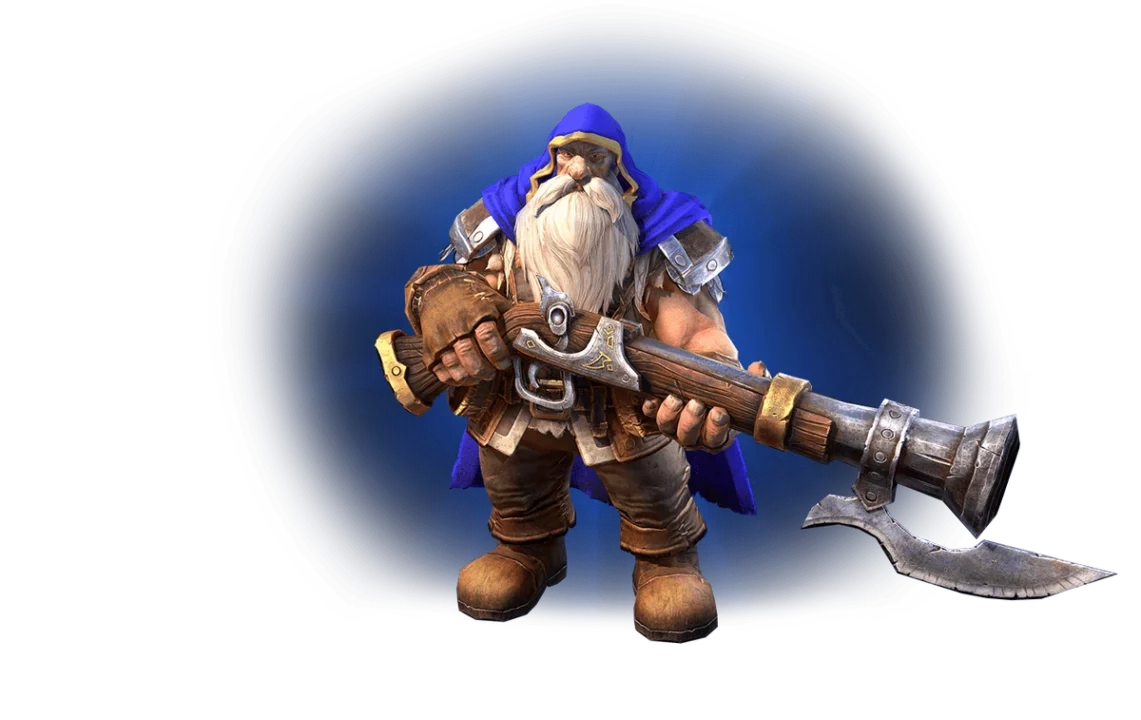
Riflemen are well rounded fighters that make up the core of our army when playing this strategy.
The Build
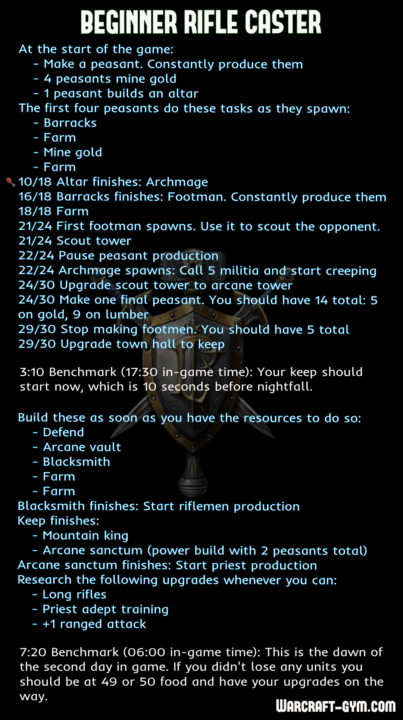
Notes
- On your Archmage always skill Water Elemental and Brilliance Aura.
- On your Mountain King you should always go Storm Bolt, and as a secondary skill start out with Bash. Thunder Clap is a very powerful alternative to Bash, but it’s more situational so not recommended for complete beginners. Feel free to experiment with it if you like. It’s very strong against opponents that mass a lot of small units.
- If you lose footmen, don’t remake them. Make Riflemen instead.
- Try to have a roughly 2-to-1 ratio of combat units (footmen and riflemen) to priests. Some examples balanced army compositions:
- 5 footmen, 3 riflemen, 4 priests
- 7 riflemen, 3 priests
- Against a demon hunter you may find that mountain king second feels weak because of the constant mana burns. You can try going naga sea witch as your second hero instead, with frost arrow and forked lightning as your skills. Use frost arrow to slow down the demon hunter.
- Against an army with large melee units (e.g. grunts, druids of the claw, knights) you can stop making priests after you have 3, and start making sorceresses instead. Their slow ability is extremely effective against large melee units and heroes. Just don’t make any sorcs in mirror if your opponent has spell breakers! They’ll bounce the slows back onto your own units.
Unit Positioning and Basic Micro
This rifle caster play style is not very mobile, which makes it important to position your units carefully. You should be patient when setting up fights. You want your Mountain King and Water Elementals in the front, with your Riflemen in an arc safely behind them, and your Priests mixed in with the Riflemen. When you’re getting ready to attack an opponent try setting up your units in formation first, so that when you move forward to attack they’ll be well-ordered. During a fight remember to use your hero abilities, focus fire enemy units with your riflemen, and micro back your injured units.
Example Games
Variation 1: Expand
Blindly doing a mid-game attack every game is a good way to learn when you’re first starting out, but it doesn’t work every game. As you get more experienced as a player you will start to recognize situations where your normal attack is unlikely to work. One variation you can explore is to expand at 50 food instead of attacking. This strategy is really strong against an opponent that over-commits to defense, for example by making a lot of towers in their base.
- A good way to transition into an expansion is still to start out with some pressure at 50 food. Once you’re at your opponent’s base you may recognize that you won’t be able to kill them, and that’s a good time to start an expansion. The pressure you apply at your opponent’s base may not be enough to end the game, but if it keeps them distracted long enough for your expansion to get up and running it’s still a very effective use of your time.
- You’ll be using 5 of your peasants to mine gold at the expansion, which will only leave 3 mining lumber, so you need to increase your lumber economy. There are several ways to do this:
- The easiest way to do this is to just make extra lumber peasants once you know you want to expand.
- Build a Lumber Mill and research Improved Lumber Harvesting. This is a very efficient way to increase your lumber economy because it doesn’t cost you any food.
- Get a Goblin Shredder from an Observatory. Shredders are expensive, but harvest lumber extremely quickly. They cost 4 food, so if you’re planning on making at least 4 lumber peasants it’s often better to just hire a Shredder instead.
- Once your expansion finishes you can break upkeep right away. Use your extra gold income to make a strong tier 2 army. You want to get up to about 70 food and then look for a fight. Try adding a second Arcane Sanctum and making a front-line of Spell Breakers. If your opponent is still defensive you can make a Workshop and some Mortars to siege their base and end the game.
- A good 70 food tier 2 army looks something like:
- 2 Heroes
- 15 Peasants (10 on gold, 5 on lumber)
- 5 Riflemen
- 3 Priests
- 3 Sorceresses
- 6 Spell Breakers
Variation 2: Castle Tech
Another option is to upgrade your Keep to a Castle (aka tech to tier 3) and add some late game tech to your army. This can be a good option if you fall behind early in a game. You still want to go to 50 food like normal, but you may feel that an attack isn’t going to work after your weak early game. Teching to Castle can be a good option in this situation. Here’s the general idea:
- At 50 food instead of attacking your opponent start your Castle
- Stay at 50 food while your Castle is in progress. You want to bank up some gold so that you can buy a bunch of Castle-tech units all at once.
- Some powerful Castle-tech options:
- A third hero! You’ll almost always want to get one. When in doubt, go Paladin third.
- Priest Master Training. This unlocks the Inner Fire spell, which is an extremely strong combat buff for your units.
- Staff of Sanctuary. This is a powerful item available in the Arcane Vault which can be used to save your low health units.
- Knights. These beefy frontline units are really strong, especially when combined with Inner Fire and Staff of Sanctuary.
- Frag Shards. This is a Workshop upgrade for Mortars which greatly increases their damage to medium and unarmored units.
- When your Castle finishes if you’re still at 50 food you should get the upgrades for your units first so you can stay out of upkeep as long as possible.
- Once you break upkeep with your Castle tech you’ll be at your power spike. From here you can attack or expand.
Other Beginner Resources
Here are some more resources that might be helpful when learning human:
- Replays of top players: https://warcraft3.info/replays/
- Some other human guides: https://warcraft-gym.com/learn-warcraft-3/learn-human/
- Video series on creeping: https://www.youtube.com/watch?v=9SQ9H1ybqO8
- Written article explaining creep mechanics: https://warcraft3.info/articles/176
- Hero experience guide: https://warcraft3.info/articles/232
